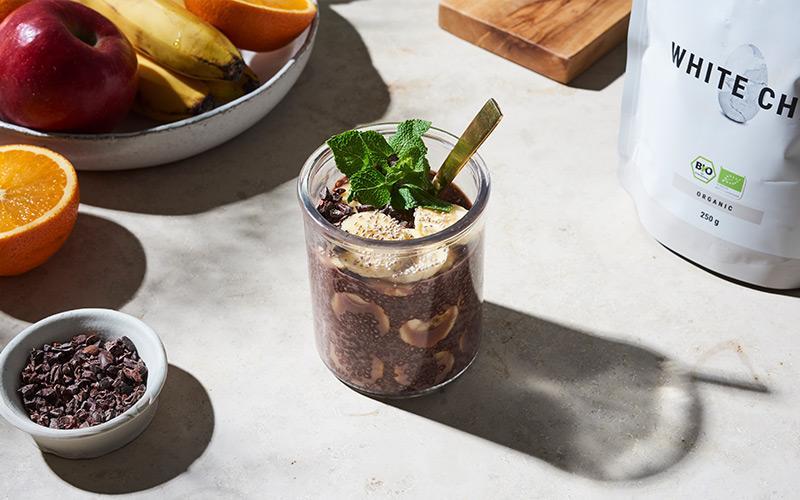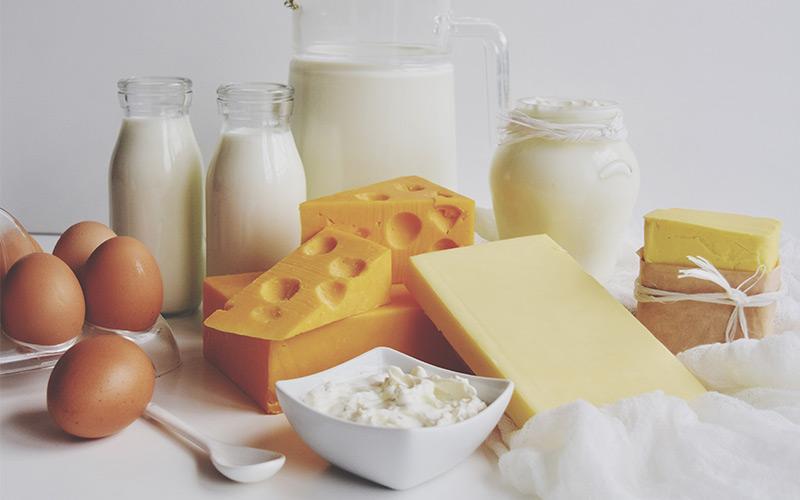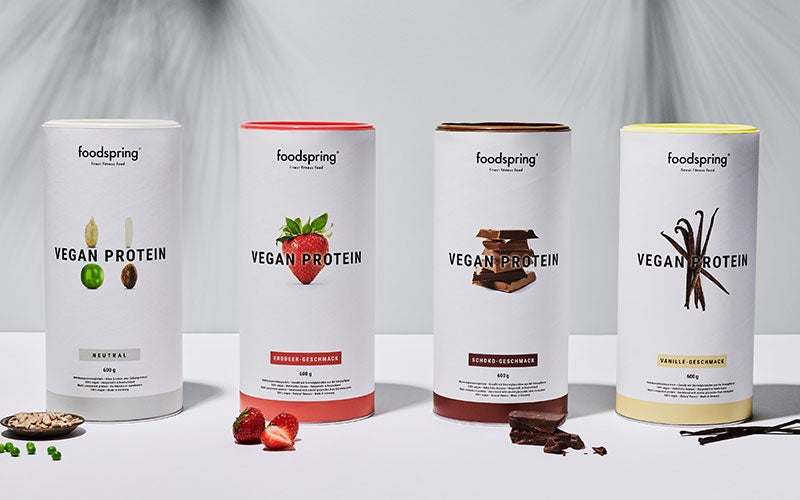How to Create a Lactose Intolerance Diet
 ©foodspring
©foodspring
Lactose intolerance is not uncommon and can be an annoying element of everyday life for a lot of people. If you’re lactose intolerant, we have all the advice you need to successfully navigate your lactose intolerance. We’ve also created a free, lactose intolerance diet plan to make it even easier for you.
Lactose intolerance is extremely common. In Europe, 5 to 15% of people suffer from an inability to consume dairy products. Of course, these figures vary from country to country. Northern Europeans are least prone to this kind of intolerance whereas 65 to 90 percent of adults in Africa and Southeast Asia are affected by it.

What is lactose?
Lactose is a sugar found naturally in human and animal milk — it makes up 7.5 percent of human milk. It consists of two molecules: glucose and galactose, which are absorbed in one block by our body. For our bodies to be able to break down lactose, our small intestine needs to release the enzyme lactase.
What is lactose intolerance?
Intolerance to lactose occurs when our bodies are not producing enough lactase. Newborns and children have less of a problem with lactase in general, likely because they’re consuming so much in breast milk.
When someone is lactose intolerant, their bodies aren’t able to fully break down the lactose they consume. Bacteria in the colon enable the undigested lactose to ferment, which is the cause of discomforts like abdominal pain, stomach aches, and bloating.
Our tip: Are you looking for a protein that’s easy to digest? Our Vegan Protein is just what you need: 100% vegan, and full of hearty, plant-based protein.

discover our plant-based protein
Symptoms of lactose intolerance
The warning signs of intolerance can vary. Most appear up to two hours after you’ve eaten milk products. Gas released in the intestine by lactose fermentation can cause you to feel bloated and uncomfortable.
The following discomforts can also occur:
- Abdominal pain
- Aerophagia (excessive air swallowing)
- Diarrhea
- Headaches
- Vertigo
- Nausea
These symptoms differ from person to person and can be more or less intense.
Causes of lactose intolerance
Our bodies begin breaking down and digesting milk products from the moment we’re born and begin breastfeeding. However, many people become less tolerant to it as they grow older and their bodies produce less lactase. Even in the worst cases, though, about 50% of our bodies’ lactase activity persists in order to be able to digest dairy products.
Decreasing lactase activity can lead to lactose intolerance, but the tolerance threshold is specific to each individual. Most people can tolerate about 10 to 12g per day, which equals about one glass of milk. Any extra consumed thereafter can cause problems. Everyone can test their tolerance threshold on their own.
Sometimes decreased lactase activity can be linked to certain medicines. For example, taking antibiotics over a long period of time can reduce lactase levels and tolerance to dairy products.
Our Protein Bread has all of the protein you need without the hassle. Crunchy on the outside, soft on the inside — it’s a treat just out of the oven and will spoil you for baked goods for life.
Eating lactose free
People with acute lactose intolerance should try to avoid milk products altogether. There are plenty of alternatives that will satisfy your cravings just as well. Be aware that a product is considered not to contain lactose when the amount of lactose it contains is less than 0.1g per 100g.
If you can’t cook your own food, be sure to pay extra attention to what you’re being served to avoid unpleasant surprises. Meals from a restaurant or takeout may include small amounts of lactose from the environment they’re prepared in.
Foods that don’t contain lactose
- Vegetables, fruit, lettuce and potatoes
- Eggs (unprocessed)
- Meat and fish
- Rice, quinoa, millet, etc.
- Dried fruit, nuts, and oil
If you find it difficult to go without dairy products altogether, try to figure out what your tolerance level is. If you’re not sure whether or not you’ll be able to handle a particular milk product or cheese, for example, have a small bite, wait a bit, and then eat more if you’re still feeling well. Once you know your threshold, you’ll know exactly how much you can and can’t eat. Combining the dairy foods with your other meals throughout the day will also make it easier for your stomach to handle.
Did you know that not all cheeses contain lactose? It depends on how the cheese matures: the longer the cheese ages, the less lactose it contains. Gouda, Emmental and Parmesan, for example, are considered lactose-free cheeses. However, we advise you to always read the packaging before digging in, as the nutritional values and lactose levels can vary depending on the production process.
Lactose-free diet plan
Going an entire week while eating enough protein and nutrients while avoiding milk products is easier than you think. In order to help you better navigate eating with this diet, we’ve developed a plan that has everything you need. Download it for free below.
Download our lactose free diet plan
We constructed this diet plan on the basis of a daily caloric intake of 1600 kcal. However, you can always modify the recipes to better suit your needs and adapt the macros the way you need them. Here is a small example to give you an idea of what a day without milk products might look like:
Example of one day of the diet plan
| Breakfast | Snack | Lunch | Snack | Dinner | Nutrition Info |
| Chocolate chia pudding | 1 apple | Chili Con Carne with rice | Vanilla vegan protein shake with 200g of lactose-free milk | Salad with orange and nuts | Cal: 1785
Carbs: 151g Protein: 90g Fat: 81g |
Our conclusion
- Those with lactose intolerance aren’t producing enough lactase to break it down.
- The tolerance threshold is specific to each individual. Many, despite having a slight intolerance, can include 10 to 12 g of lactose in their diet per day.
- The most common disorders are abdominal and stomach pain, bloating, and other digestive problems.
- Lactose intolerance can result in reduced or even zero consumption of dairy products. However, many products offer alternatives that don’t contain lactose.
Sources for this article
We at foodspring use only high-quality sources, including peer-reviewed studies, to support the facts within our articles. Read our editorial policy to learn more about how we fact-check and keep our content accurate, reliable, and trustworthy.





























